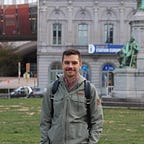Small Towns in Podlasie Await Exploration
As you’re reading this, hopefully the worst of the coronavirus pandemic has subsided, although some form of social distancing procedures may last for quite some time to come. The Polish Tourism Organization put out a notice urging travelers “Don’t Cancel — Postpone” and that “Poland Will Wait.” That being said, it isn’t too early to start thinking about places to visit once it is safe to resume travel and recreation.
When planning your next trip to Poland, be sure to consider visiting some hidden gems outside the usual tourist hotspots. Below are two such small towns in Podlasie — a region in Northeastern Poland — that can be visited on a day trip from Warsaw. They are sure to provide visitors with a unique, fascinating and insightful experience.
The small town of Tykocin lies on the river Narew near the outskirts of Białystok, about an hour and a half drive from Warsaw. The town’s history stretches back to the 15th century, and over the years it has on occasion hosted various kings and royal officials. It was at the Tykocin Castle that King August II the Strong established the Order of the White Eagle in 1705, Poland’s preeminent order of chivalry which remains in use to this day as the highest state distinction presented by the President.
On the town’s main square stands a historic monument of Stefan Czarnecki, a famed Polish nobleman and military commander who is mentioned by name in the Polish national anthem for his military leadership during the Swedish invasion of the Polish-Lithuanian Commonwealth in the 17th century. The stone statue, believed to have been erected in 1763, is considered to be the second oldest existing secular monument in Poland following the King Zygmunt Column in Warsaw’s Old Town.
Although Tykocin only has about 2,000 residents today, over 80,000 tourists visit this quaint town annually, and many of them come to see the renowned Tykocin Synagogue.
Throughout most of Tykocin’s existence, Jewish residents played a significant role in the town’s community, until Jewish life was ended by the Holocaust. Before the outbreak of World War II, Jews made up 50% of the town’s population. Now all that’s left is the synagogue.
The Tykocin Synagogue, which was constructed in 1642, is today the second largest and one of the oldest synagogues in Poland. Andrzej Lechowski, the Director of the Podlaskie Museum which oversees the synagogue, has described it as, “one of the most important Polish historical sites.”
The synagogue recently underwent a multi-million złoty restoration, co-financed by the Polish Ministry of Culture and National Heritage and the European Union, which restored the synagogue to the splendor it would have had during the inter-war years.
The synagogue’s beautiful interior is decorated with meticulously written Hebrew lettering on the walls and ornately painted elements. An audio guide in numerous languages is available to contextualize and educate visitors about the history of this site, the community that worshipped here, and the various elements found within. The moving visit to the synagogue beckons the visitor to think, reflect and remember those who are missing from this house of worship — the worshippers.
You can learn more about Tykocin’s Jewish past on the Polin Museum’s Virtual Shtetl Website: shtetl.org.pl
Not far from Tykocin, on the other side of Białystok, lies the slightly larger town of Supraśl, population 4,500. Here stands the Monastery of the Annunciation belonging to the Polish Orthodox Church. It was founded in the 16th century and has a long and winding history. In 1939 it was occupied by Soviet forces following the annexation of Eastern Poland by the Soviet Union. Later the church was demolished by Nazi German troops, and the complex was used as an agricultural school by the Polish Communist authorities after the war. Since 1989, the complex once again serves as an Orthodox Monastery, and is open to visitors who can learn about the Orthodox faith and customs during tours of the grounds.
Adjacent to the monastery is the Icon Museum, another branch of the Podlaskie Museum. The icon museum has the largest collections of icons in all of Poland. Icons are religious works of art prevalent in Eastern Orthodoxy which are considered by faithful to be sacred and are used in religious devotion. Visiting the museum is only possible at certain times and with a tour guide. That’s because the Icon Museum is no typical museum, with four walls and paintings hanging therein. But rather, it is a museum that presents sacred art, and does so with care.
Each of the museum’s rooms are specially prepared to display carefully selected icons, with minimal lighting to protect these fragile and sacred objects. One room is stylized like an old stone cave, with icons on display within hallowed nooks. Another room is made to look like an old single-room house, with icons adorning the interior as they would in a peasant’s home a century ago in Podlasie. The museum curators put great thought into the display of the icons, which range from the historic to modern variants. This unique visiting experience makes for a very fascinating visit, whether you are interested in art, history, religion, or simply want to learn more about this historic medium of religious expression.
A visit to such small towns as Tykocin and Supraśl can leave just as meaningful an impact on visitors as usual tourist centers and large cities. There are so many fascinating places to explore and stories to be uncovered simply by going off the beaten path. I hope you can find some for yourself to explore in the not too distant future.
This article was published in the May 2020 edition of the Polish American Journal
